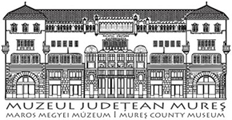Marisia - Maros Megyei Múzeum Évkönyve 32/2. (2012)
Articles
164 Zs. Nyárádi Details regarding Szentimre During September 2009 a small section of the village was excavated. The site of the investigation was where, previously during the survey the greatest concentration of Árpád age pottery fragments were found. This was located east of Mórun creek, and south of the deep ditch crossing the valley. Because both the time and the material resources were limited, we decided that, in spite of proceeding with the two 5 x 5 m trench procedure, in the beginning we would open an area only of about 5 x 1 m and proceed if we find any traces of the settlement (PI. 6). We continued the numbering of trenches and features which we began during excavation of the church in 2006. Description of excavation trenches, features and materials Trench 3 The 5 x 1 m trench was oriented in a north-south direction. We recovered a considerable amount of pottery fragments from the layer of ploughed soil, most of which dated back to the age of the Árpád dynasty and a small part of them to the middle ages, but we also found some fragments of stove tiles. Between 15-35 cm the features became scarcer, these being mostly 7th-8lh century, Migration Period pottery fragments (Pi. 10/4-5). We reached the yellow clayey subsoil at a depth of 40 cm. During the trimming of the bottom of the trench, in the northern corner we found traces of features. The round trace of feature 7 was found in the south western part of the trench. The stilt pits eastern part reached into the trench, its western part runs out, its bottom is horizontal. Its filling was brown-grey with coal stains. During its excavation we uncovered grey fragments from the side of a handmade, thinned with pebble grains, linear string decorated pot. The round trace of feature 8 was noticed in the middle of trench number 3. Its filling was loose and contained slightly mixed coal and wattle-and-daub chunks. Few fragments of pottery were found in the filling. The ones that did turn up were handmade and thinned with pebble grain. Both features presumably date back to the Migration period. Trench 4 The 5 x 5 m trench was opened 5.5 m south of number 3. Bellow the layer of ploughed soil, at a depth of 15-25 cm, we found a grey, thick, slightly mixed, medieval culture layer with wattle-and-daub chunks (PL 7/1). From this level we noticed the starting level of several features. The scattered vessel fragments from the late Migration Period (PI. 10/6-9) indicated the presence of nearby destroyed features. We could observe the round traces of feature 4 after we removed the layer of humus. The sides of the large pit became narrower toward the bottom, with the bottom itself being straight. Its diameter was 1-1.10 cm and its depth 80 cm. We observed two layers in its filling; the upper one was a dense, slightly mixed with coal patches and wattle-and-daub chunks; beneath it there was a brown, clay patched, and slightly mixed layer with coal patches. During its excavation we found plenty of features, typical 14th century pottery fragments, among them three fine sludge, brown, fragments of pitchers, made on fast potter’s wheels (PI. 12). One of them even had traces of red paint on it. Similar types of vessels were found in the Franciscan church from Odorheiu Secuiesc, alongside coins of Charles I of Hungary. The vessels presumably got to our area because of the
